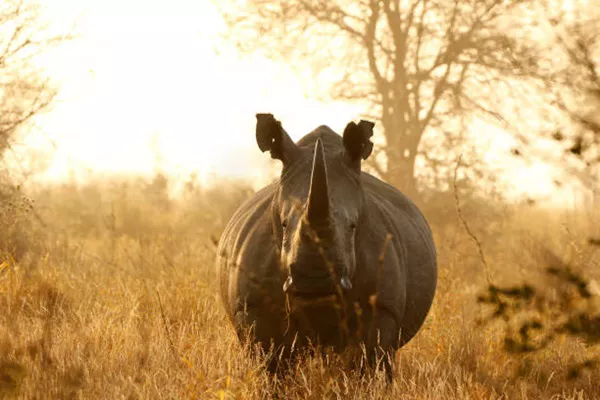
Embarking on a Big Five Safari in Tanzania is an unparalleled adventure, offering the opportunity to witness some of the most majestic and iconic wildlife species on the planet. The term "Big Five" refers to the African elephant, lion, leopard, buffalo, and rhinoceros, representing a sought-after wildlife checklist for safari enthusiasts. In this comprehensive guide, we delve into the allure of the Big Five Safari in Tanzania, exploring the incredible landscapes, diverse ecosystems, and the thrill of encountering these magnificent creatures in their natural habitats.
Description: The African elephant, the largest land mammal, roams the savannas of Tanzania. Recognizable by its enormous ears and long tusks, the African elephant is a captivating species to observe.
Habitat: Found in various national parks, including Tarangire National Park, where large herds migrate in search of water during the dry season.
Description: The king of the jungle, lions are the epitome of strength and majesty. Tanzania is home to various lion populations, and witnessing pride in their natural habitat is a highlight of any safari.
Habitat: Lions thrive in Serengeti National Park and Ngorongoro Crater, where the abundance of prey supports their populations.
Description: The elusive and solitary leopard is a master of camouflage, making it a thrilling yet challenging species to spot. The leopard's grace and agility in trees add to its allure.
Habitat: Tarangire National Park and the Serengeti offer opportunities to spot leopards, especially in acacia trees or rocky outcrops.
Description: African buffalos, with their robust build and distinctive curved horns, roam Tanzania's grasslands and woodlands. They are known for their social behavior and formidable presence.
Habitat: Seen in various parks, including the Selous Game Reserve and Ruaha National Park, where large herds graze and traverse the landscapes.
Description: Rhinoceros, both black and white species, are a symbol of strength and resilience. Unfortunately, they face threats from poaching. Conservation efforts aim to protect and preserve these magnificent creatures.
Habitat: While rhinos are more challenging to encounter, the Ngorongoro Crater is one of the locations where black rhinos can still be found.
Highlights: The Serengeti is renowned for its vast plains, hosting the Great Migration and providing a prime habitat for lions and other Big Five members.
Highlights: Often referred to as the "eighth wonder of the world," the Ngorongoro Crater is a UNESCO World Heritage Site with a high concentration of wildlife, including the Big Five.
Highlights: Known for its large elephant herds, Tarangire National Park offers a unique landscape with baobab trees and is home to lions, leopards, and buffalos.
Highlights: As one of Africa's largest game reserves, Selous provides a more off-the-beaten-path experience, with opportunities to spot the Big Five in a diverse environment.
Highlights: Ruaha's remote location and varied ecosystems make it an excellent destination for a Big Five Safari, with a focus on conservation efforts.
Timing your safari during the dry season (June to October) increases the chances of wildlife sightings, as animals gather around water sources.
Knowledgeable guides enhance your safari experience, providing insights into animal behavior and maximizing opportunities to spot the Big Five.
Wildlife encounters require patience. Be observant, listen to the sounds of the bush, and scan the landscapes for movement.
Pack essentials such as binoculars, a camera with a good zoom lens, and lightweight, neutral-colored clothing for comfort and sun protection.
Practice responsible tourism by maintaining a respectful distance from wildlife, following park regulations, and minimizing your environmental impact.
Embarking on a Big Five Safari in Tanzania is a journey into the heart of the wild, where each day brings the possibility of encountering Africa's most iconic species. From the vast plains of the Serengeti to the spectacular Ngorongoro Crater, Tanzania offers a rich tapestry of landscapes for a truly memorable safari experience. Choosing the right parks, understanding the behavior of the Big Five, and embracing the spirit of adventure ensures that your Tanzanian safari becomes an unforgettable exploration of nature's wonders.